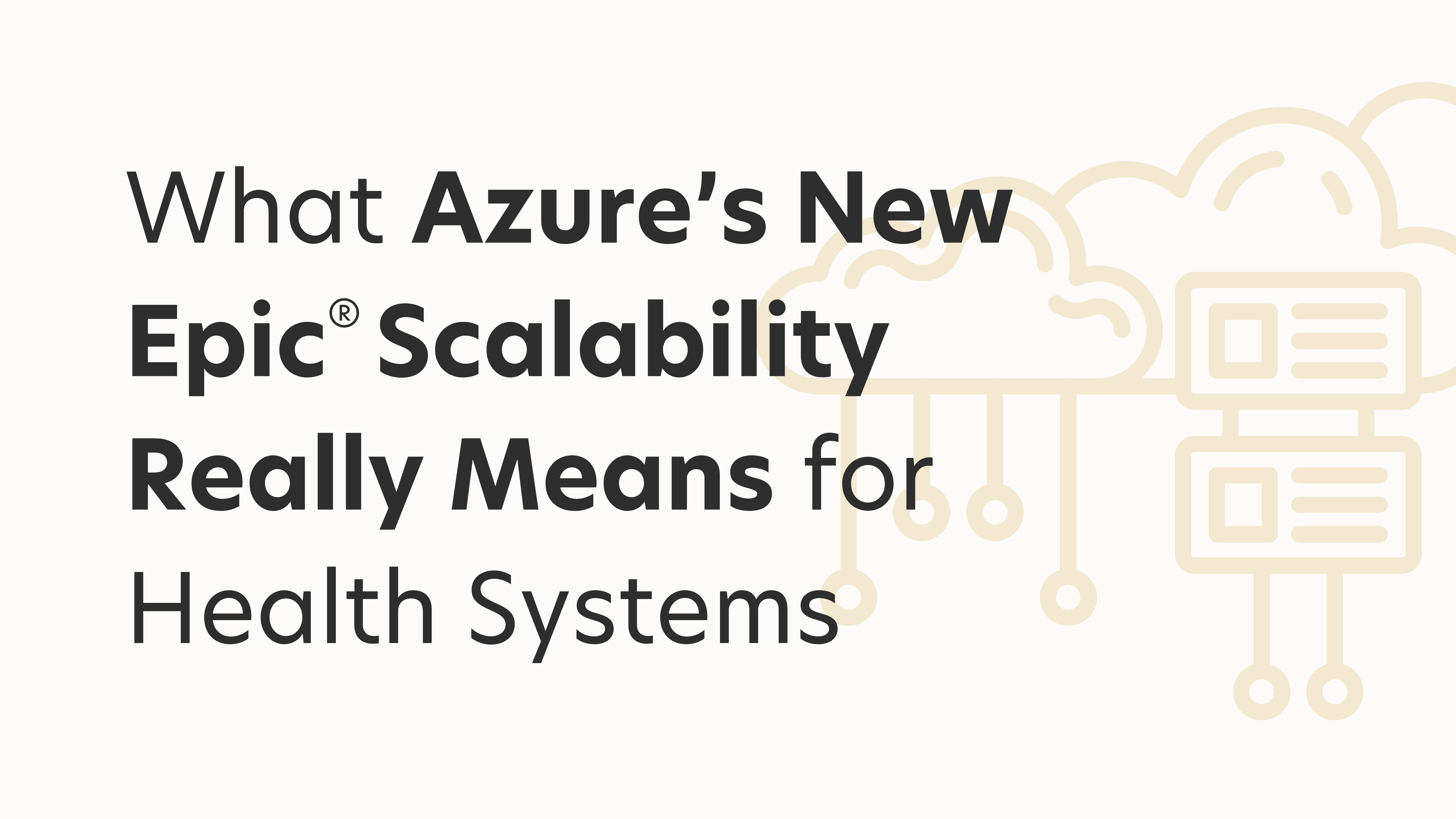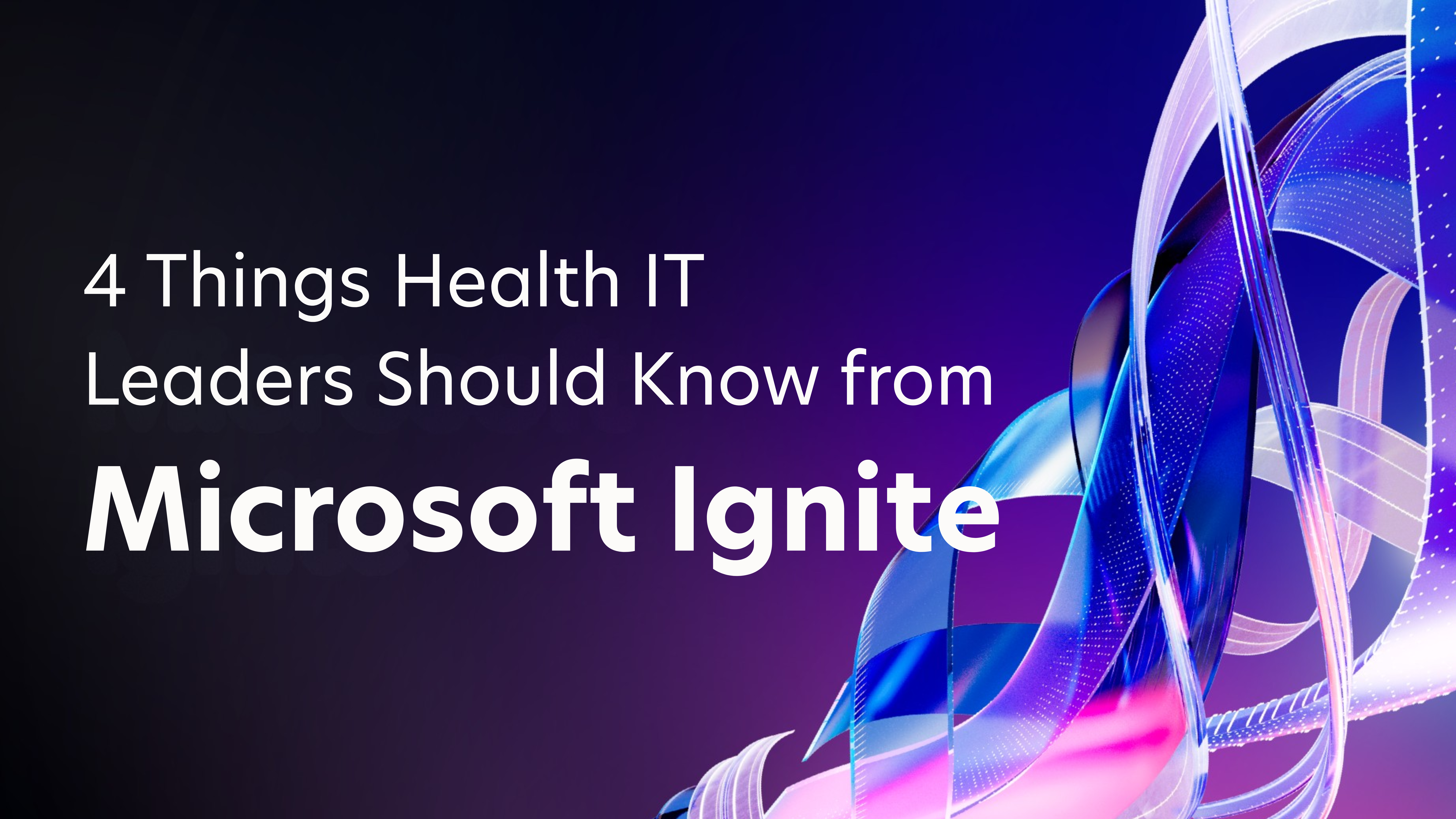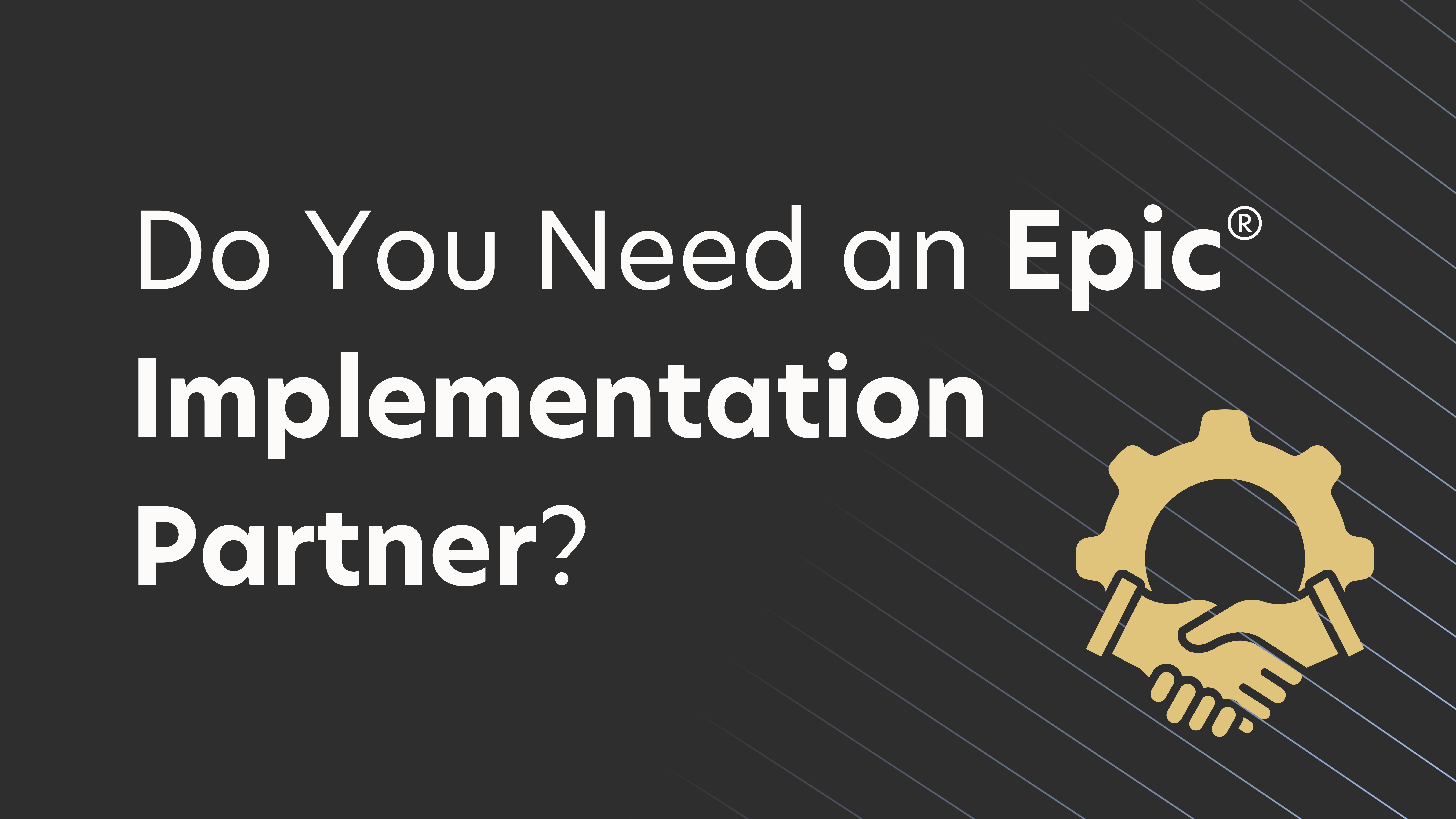
Microsoft’s latest scalability update for Epic® on Azure marks another big step forward in healthcare cloud maturity. With new benchmarks now supporting up to 110 million GRefs/s (Global References per second), Azure can confidently host nearly every Epic customer (about 96 percent) with room to spare for growth.
For CIOs and healthcare executives who’ve wondered whether Azure can truly handle Epic at enterprise scale, the answer is simple: it can, and it does.
Breaking the “Too Big for Cloud” Myth
A few years ago, a lot of health systems still questioned whether the public cloud could really keep up with their Epic environment’s demands. Those days are over.
Azure’s jump from around 60 million to 110 million GRefs/s shows that even the biggest, most complex Epic environments can now run comfortably in Azure – with better performance, scalability, and security healthcare requires.
What this means is straightforward: unless you’re one of the four percent of organizations, you don’t have to worry about outgrowing your cloud. As your organization expands, merges, or adds new Epic modules, Azure scales right along with you. No more procurement delays. No hardware refresh. No forklift migrations every few years.
This is the kind of progress that makes cloud not just viable, but the smarter, more sustainable choice for Epic moving forward.
What This Means for Epic Performance
Epic sizing commonly references Global References per second (GRefs/s) – a database throughput metric indicating how many simultaneous operations the system can process. The higher the number, the more transactions your environment has to process clinical data, billing transactions, and interoperability messages without delay.
The new 110 million GRefs/s milestone is well beyond what most health systems need today. That’s a good thing – it gives organizations the headroom to grow, respond to new business needs, or expand data-intensive capabilities like AI and real-time analytics without worrying about re-architecting their environment.
Scalability is more than just speed; it’s also freedom – the ability to evolve without limits. Which is exactly what Azure’s delivering now.
The Power of the New M416bs_v3 VM
At the center of this milestone is Microsoft’s new M416bs_v3 virtual machine shape, which delivers faster CPUs, greater memory throughput, and improved storage scalability.
When EHC Consulting migrated Community Health Network to Azure – the first to run InterSystems’ ECP (Enterprise Cache Protocol) for Epic in native Azure – ECP was necessary due to earlier scalability limitations.
With today’s M416bs_v3 performance, larger organizations may run Epic on a single-server (SMP) architecture, rather than ECP, simplifying the architecture, operations, and reducing cost.
With Azure’s Ultra Disk and Premium SSD v2 storage options, health systems can count on low latency, high IOPS, and consistent throughput for their operational databases – exactly what Epic needs for mission-critical performance.
Future-Proofing Epic on Azure
One of the biggest advantages of moving Epic to Azure is that you never have to move again. Instead of refreshing hardware every few years, Azure lets you scale resources instantly.
Need more compute power? Resize to a larger VM with a brief restart.
Need more storage performance or capacity? Upgrade the disks without downtime.
Microsoft’s continued investment in scalability means your infrastructure can grow alongside your organization – no rebuilds, no replatforming, no guessing when you’ll hit the next ceiling. It’s performance and flexibility that evolve at the same pace as your health system.
Looking Ahead
Microsoft’s deep collaboration with Epic keeps moving the industry forward. Every new scalability benchmark, every new VM size, every new storage enhancement gives health systems more confidence to modernize without compromise.
Cloud’s not going away. It’s only getting stronger. Microsoft is investing heavily in Azure – not just for general workloads, but for healthcare specifically – because this is where the future is headed.
For CIOs and healthcare executives, that means peace of mind. You can run Epic confidently in Azure, scale as you grow, and finally stop worrying about hardware.
Azure now delivers the performance, stability, and scalability that Epic requires, with the flexibility modern health systems need.
If you’re focused on modernization, resilience, and cost efficiency, Azure is ready, proven, and built for what’s next.
At EHC, we’ve seen it firsthand. We’re here to help health systems make the move and make it stick.




